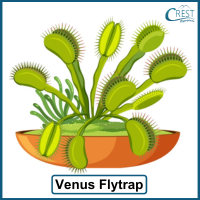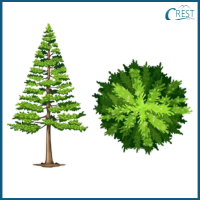1. Which of the following is an example of a plant adaptation to reduce water loss in dry areas?
a) Broad leaves
b) Needle-like leaves
c) Waxy coating on leaves
d) Shedding of leaves
Answer: b) Some desert plants have spines instead of leaves to reduce water loss.
2. During a discussion about adaptation in plants, 3 friends made the following statements. Who is correct?
Diana: Mangroves grow in areas that are dry and sandy.
Maggie: Water lily grows completely submerged in water.
Eddie: Some desert plants have stems or leaves that can store water.
a) Diana and Eddie
b) Diana and Maggie
c) Only Maggie
d) Only Eddie
Answer:d) Eddie is correct. Many desert plants are adapted to store water in their stems and leaves. Both Diana and Maggie are incorrect because Mangroves grow in wet and marshy areas and Water lily has stems, leaves and flowers that float on the surface.
3. What is the special adaptation of the plant shown in the picture?

a) It has long, ribbon-like leaves.
b) Its leaves can float on the water's surface.
c) It has traps that can snap shut when an insect lands on them.
d) It has roots that grow above the soil.
Answer: c) The special adaptation of the Venus flytrap is its ability to have traps that snap shut when an insect lands on them, allowing the plant to catch and digest insects for nutrients.
4. Observe the picture and identify which of the following is not an adaptation of trees growing in mountains.

a) Broad leaves for capturing sunlight
b) Narrow and needle-shaped leaves
c) Conical shape
d) Waxy coating on leaves
Answer: a) Broad leaves are not typically found in trees growing in mountains as they are more suited for capturing sunlight in environments with abundant sunlight, such as rainforests or plains.
5. Match the following.
| Column I |
Column II |
| 1. Evergreen trees |
A) Shed their leaves during winter |
| 2. Conifers |
B) Do not shed their leaves and stay green all year long |
| 3. Deciduous trees |
C) Cone-shaped trees |
a) 1:A, 2:C, 3:B
b) 1:B, 2:C, 3:A
c) 1:C, 2:A, 3:B
d) 1:B, 2:A, 3:C
Answer: b) Evergreen trees: Do not shed their leaves and stay green all year long.
Conifers: Cone-shaped trees.
Deciduous trees: Shed their leaves during winter



